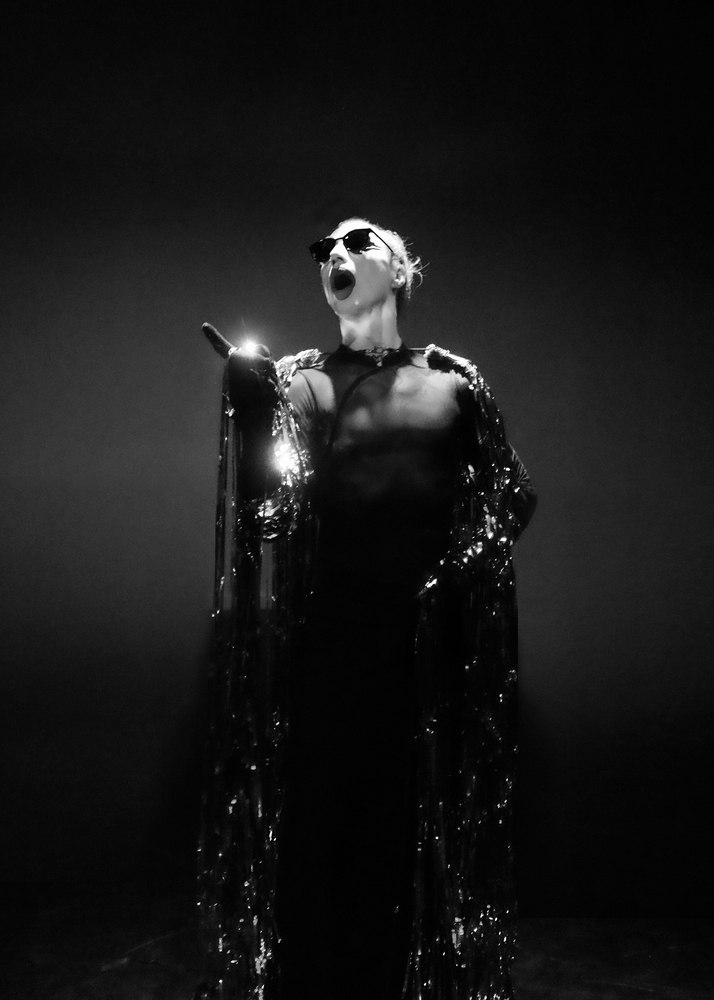
I AM A HAUNTED HOUSE
first performed on March 06, 2020
The Kelly Strayhorn Theater
performed once in 2020
SCOTT ANDREW, JESSE FACTOR
Angela Washko, Jesse Stiles, Andy Hasenpflug
Pittsburgh, PA
565332708a565332708r565332708t565332708@565332708s565332708c565332708o565332708t565332708t565332708n565332708a565332708n565332708d565332708r565332708e565332708w565332708.565332708c565332708o565332708m
www.scottnandrew.com/work.iamahauntedhouse
I AM A HAUNTED HOUSE
SCOTT ANDREW, JESSE FACTOR
“I Am A Haunted House; Re-animating Joan” is a multimedia dance theater experiment drawing from drag and contemplative performance.
In one movement, an image of Joan Crawford is projected so that her face seems to shapeshift and her eyes become traveling portals, voids, which eventually transport the viewer to a quiet, oceanic state of grace beneath the noise. In another, Jesse Factor lip syncs to the audio of an interview where Joan describes the transition to talkies and relates shock at hearing her recorded voice (“That’s not me, that’s a man!”). The audio is stretched out and deteriorates into Crawford’s voice, as if she were speaking through a buggy Skype connection, and the resulting voice is deep, syrupy, indeterminate, and altered by time.
Jesse Factor and Scott Andrew share a fascination with the ways that time bound representation fails. Every representation is, in some sense, a lie—if it contained all the qualities of the original, wouldn’t it be the thing itself? The tension arises in part from this paradox. Crawford’s likeness has been copied, altered, and imbued with projected meaning to the extent that you’d think she’s been destabilized. There is still, unbelievably, something there—a ghost, or as Factor puts it, “Divas in exile from time and bodies and the haunting impressions they’ve left behind.”
In the performance, Factor moves with a precision and discipline that is delightful to watch. At every moment, it seems as if his body is aware of the impossible multitude of ways to move, capable of the whole range of human physical expression; he selects this gesture, this angle of repose, this degree of tension. The this, this, this of his movements betray a kind of sublime ecstasy, tensile, present, and deliberative.
Andrew’s phantasmagorical queer landscapes seek out moments of uncanny resonance where the edges of seemingly reliable representation shift or blur, exposing portals which lead to speculative realities. As Andrew says, “our performance is a break in reality, a playful spectacle of live and virtual bodies that move with magical tension, glitching and evaporating into a shadowy, cathartic puff of smoke.”